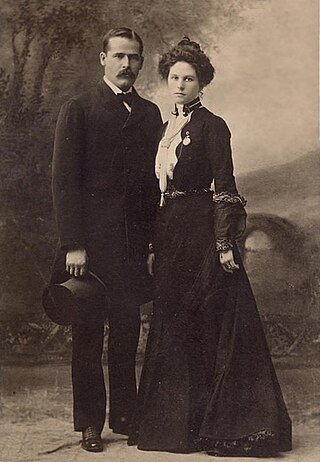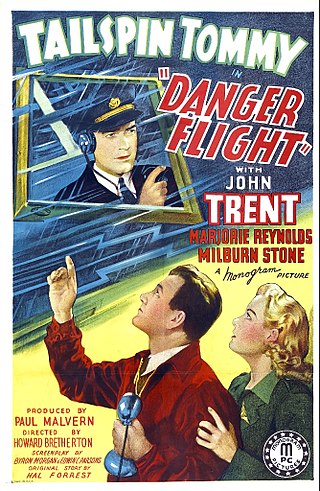Related Research Articles

Bethel Park is a borough with home rule status in Allegheny County, Pennsylvania, United States. It is a suburb within the Pittsburgh metropolitan area, located approximately 7 miles (11 km) south of Pittsburgh. The population was 33,577 as of the 2020 census.

George Clarence "Bugs" Moran was an American Chicago Prohibition-era gangster. He was incarcerated three times before his 21st birthday. Seven members of his gang were gunned down and killed in a warehouse in the Saint Valentine's Day Massacre of February 14, 1929, supposedly on the orders of his rival Al Capone.

Harry Alonzo Longabaugh, better known as the Sundance Kid, was an outlaw and member of Butch Cassidy's Wild Bunch in the American Old West. He likely met Butch Cassidy during a hunting trip in 1883 or earlier. The "Wild Bunch" gang performed the longest string of successful train and bank robberies in American history. Longabaugh fled the United States along with his consort Etta Place and Butch Cassidy to escape the dogged pursuit of the Pinkerton Detective Agency. The trio fled first to Argentina and then to Bolivia, where most historians believe Parker (Cassidy) and Longabaugh were killed in a shootout in November 1908.

Harry "Pete" Pierpont was a Prohibition era gangster, convicted murderer and bank robber. He was a friend and mentor to John Dillinger.

BMX Bandits is a 1983 Australian crime comedy action film directed by Brian Trenchard-Smith and starring Nicole Kidman.
The Winter Hill Gang was a loose confederation of organized crime figures in the Boston, Massachusetts, area. It is generally considered an Irish Mob organization, with most gang members and the leadership consisting predominantly of Irish-Americans, though some notable members, such as Johnny Martorano, are of Italian-American descent.

Anthony Chebatoris was a Russian-born bank robber and convicted murderer who is the only person to be executed in the U.S. state of Michigan since it gained statehood in 1837. Although Michigan abolished capital punishment for murder in 1847, Chebatoris was tried under the new Federal Bank Robbery Act of 1934, which made bank robbery and its related offenses federal crimes, beyond state jurisdiction.
The Irish Mob is a usually crime family-based ethnic collective of organized crime syndicates composed of primarily ethnic Irish members which operate primarily in Ireland, the United States, the United Kingdom, Canada and Australia, and have been in existence since the early 19th century. Originating in Irish-American street gangs – famously first depicted in Herbert Asbury's 1927 book, The Gangs of New York – the Irish Mob has appeared in most major U.S. and Canadian cities, especially in the Northeast and the urban industrial, including Boston, New York City, Philadelphia, Pittsburgh, Baltimore, Cleveland, and Chicago.

Gus Winkler was an American gangster who headed a Prohibition-era criminal gang specializing in armed robbery and murder for hire with Fred "Killer" Burke. Winkler was a senior associate of Chicago Outfit boss Al Capone and is considered a suspect in the St. Valentine's Day Massacre. Winkler is believed to be the first member of the National Crime Syndicate to be murdered for talking to the FBI.
Egan's Rats was an American organized crime gang that exercised considerable power in St. Louis, Missouri, from 1890 to 1924. Its 35 years of criminal activity included bootlegging, labor slugging, voter intimidation, armed robbery, and murder. Although predominantly Irish-American, Egan's Rats did include a few Italian-Americans and some Jewish immigrants, most notably Max "Big Maxie" Greenberg.
Paul McGonagle Sr. was an Irish-American mobster and leader of the Mullen Gang, a South Boston street crew involved in burglary and armed robbery.
The Flathead Gang, also known as The Flatheads, was a group of bank robbers. The gang was operating in the Detroit, Michigan area. When the police became a major problem for the gang they decided to move their robberies and other crimes to the State of Pennsylvania. Paul Jaworski, the leader of the gang was executed in Pennsylvania in 1929 for murder.
Fred Samuel Goetz, also known as "Shotgun" George Ziegler, was a Chicago Outfit mobster and a suspected participant in the Saint Valentine's Day Massacre, in 1929.

Ladies They Talk About is a 1933 pre-Code American crime drama directed by Howard Bretherton and William Keighley, and starring Barbara Stanwyck, Preston Foster, and Lyle Talbot. The film is about an attractive woman who is a member of a bank-robbery gang. It is based on the play Gangstress, or Women in Prison by Dorothy Mackaye and Carlton Miles. In 1928, Dorothy Mackaye, #440960, served less than ten months of a one- to three-year sentence in San Quentin State Prison.
Robert Carey was a Midwestern armed robber and contract killer responsible for many crimes during the Prohibition era. He is considered a suspect in the infamous St. Valentine's Day Massacre of 1929.

Danger Flight is a 1939 American film directed by Howard Bretherton and starring John Trent as Tailspin Tommy Tompkins, Marjorie Reynolds, Milburn Stone and Jason Robards Sr. The film featured young aviation enthusiasts in a model club.

The Holden–Keating Gang was a bank robbing team, led by Thomas James Holden and Francis Keating, which was active in the Midwestern United States from 1926 to 1932. Holden was described by a spokesman for the FBI as "a menace to every man, woman, and child in America" and was the first fugitive to be officially listed on the FBI's Top Ten Most Wanted List in 1950.
The Whittemore Gang was a group of bank robbers active in the Mid-Atlantic and Eastern United States during the mid-1920s. Led by Richard Reese Whittemore, the gang, including his wife Margaret, went on a year-long crime spree committing payroll, bank and jewelry robberies in Maryland and New York before their capture in 1926.

Lady Gangster is a 1942 Warner Bros. B picture crime film directed by Robert Florey, credited as "Florian Roberts". It is based on the play Gangstress, or Women in Prison by Dorothy Mackaye, who in 1928, as #440960, served less than ten months of a one- to three-year sentence in San Quentin State Prison. Lady Gangster is a remake of the pre-Code film, Ladies They Talk About (1933). Jackie Gleason plays a supporting role.

The Purple Gang, also known as the Sugar House Gang, was a criminal mob of bootleggers and hijackers composed predominantly of Jewish gangsters. They operated in Detroit, Michigan, during the 1920s of the Prohibition era and came to be Detroit's dominant criminal gang. Excessive violence and infighting caused the gang to destroy itself in the 1930s.
References
- ↑ "Paul Jaworski Paid Supreme Penalty Yesterday; Body Unclaimed". Indiana Evening Gazette. Indiana, Pennsylvania. January 22, 1929. p. 1. Archived from the original on June 16, 2011. Retrieved January 10, 2009.
- 1 2 Morton, James (2002) [1998]. "10: Cleveland". Gangland International: The Mafia and Other Mobs. Warner. pp. 235–236. ISBN 0-7515-2237-6.
Of course pre-war crime in Cleveland had not been wholly from the Italian and Jewish element. There were at least two major Polish-led gangs of robbers. One was the Flatheads led by Paul Jaworski. On 13 September 1928 when Jaworski and Frank "Whitey" Kraft were caught in a restaurant, Kraft ran out the back but Jaworski holed up in Chambers Avenue. He was driven out by tear gas and was shot. It was not thought he would survive, but he did so. He has already shot a prison guard escaping from Pittsburgh, and was said to have killed up to 26 people including a former gang member who was also a drug addict. Jaworski, rather than see him suffer, threw his body in the river. Returned to Pennsylvania where he was electrocuted." "Shortly before his execution, Jaworski sent his friends a postcard with his future address - 45 Hellsfire Road, 6/14 miles from Hell. Father Pat O'Brien would not have used him as an example. Frank "Whitey" Kraft was later killed by police in Detroit.
- ↑ Top 10 Inventions in Money Technology | ATM Marketplace Archived November 2, 2005, at the Wayback Machine
- ↑ On-This-Day.com - March 11
- ↑ "Bandits Dynamite Armored Pay Car and Take $104,250". New York Times (March 12). March 12, 1927. Retrieved November 6, 2013.
- 1 2 The Great Detroit News Payroll Robbery, Detroit History, at detnews.com, 5/1/2000 Archived July 13, 2012, at archive.today
- ↑ "Tests Sanity of Jaworski". The Morning Herald. Uniontown, Pennsylvania. January 5, 1929. p. 3. Archived from the original on June 16, 2011. Retrieved January 10, 2009.
- ↑ "Paul Jaworski to be executed this morning". The Morning Herald. Uniontown, Pennsylvania. January 21, 1929. p. 1. Archived from the original on June 16, 2011. Retrieved January 10, 2009.